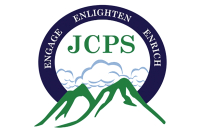Lyon was among WNC’s notable botanist
Andre and Francois Michaux, and John Fraser, and soon to be followed by Thomas Nuttall, Asa Gray, and Moses Ashley Curtis, among others, John Lyon was among the intrepid plant collectors who first penetrated the mountains of Western North Carolina in the late 18th and early 20th centuries to catalogue the diverse and often unique flora that flourishes here. Of those mentioned in the preceding sentence, Lyons is perhaps the most neglected. An overview of his activities and of his death in Asheville (where his gravesite can still be located) is worthy of the attention of those interested in the region’s history in general and of its botanical aspects in particular.
Lyon (1765-1814) was born in Gillogie in Forfarshire Scotland, a center of flax production. Very little is known about his early life or about events that brought him to the United States. By 1796, he was managing the 300-acre garden of William Hamilton located on his Woodlands estate alongside the Schuylkill River just outside Philadelphia.
Beginning in 1799, so as to secure additional plants for Woodlands, Lyons was commissioned to make a plant-collecting trip into the Allegheny Mountains of western Pennsylvania. Thereafter, until the year of his death, he made similar excursions as far west as Nashville and as far south as Florida. Most his travels were in the southern Appalachians, especially into Western North Carolina, which he visited on seven separate occasions.
A journal that Lyons kept is preserved in the American Philosophical Society in Philadelphia. It was edited with extensive notes by Joseph Ewan and Nesta Ewan and published as John Lyon, Nurseryman and Plant Hunter, and His Journal, 1799-1814, Transactions of the American Philosophical Society (May 1963). The journal indicates that Lyon collected WNC plants atop Roan, Grandfather, and Pilot mountains, among others. He is credited with introducing 31 new plants into horticulture. Among these was mountain fetterbush (also called mountain andromeda), which he discovered on Pilot Mountain on Sept. 16, 1807. Fetterbush, now planted as far north as Boston as a cultivar because of its hardy nature, is prized for its handsome habit and beautiful floral display. In our immediate area, the plant can be easily located, in any season, growing wild along the Blue Ridge Parkway at the Fetterbush Gap (milepost 421.7) near the Devils Courthouse.
In his wonderful book A Reunion of Trees: The Discovery of Exotic Plants and Their Introduction into North American and European Landscapes (Harvard University Press, 1990), Stephen A. Spongberg surveys “the risks and privations encountered in the field” by botanical explorers. “On one foray,” Spongberg notes that, “a mad dog bit the collector on the leg, forcing Lyon to sear the three punctures he sustained with a burning-hot iron and to depend on self-administered folk remedies. When his horse went astray he was sometimes forced to travel on foot, and poor roads and the lack of maps or adequate directions often resulted in lost bearings and restless nights spent without an evening meal and the comfort of a bed. The ultimate disaster that can befall the collector-naturalist in the field is to meet an untimely death, thousands of miles from home, family, and friends. This was the fate of John Lyons.”
Related Items
That “fate” is described in the second volume of F.A. Sondley’s A History of Buncombe County, North Carolina (Asheville: The Advocate Printing Co., 1930), wherein a letter written by the noted 19th century historian Silas McDowell in 1877 is reproduced. Primarily a resident of Macon County, McDowell lived from 1912 into1914, as a boy, near Asheville. In his letter, McDowell noted that, due to maladies contracted in his strenuous travels, Lyon — “a low, thick-set, small man of fine countenance” — came from Black Mountain in the early autumn of 1814 and took a room in the Eagle Hotel.
According to McDowell, Lyon and James Johnston, a blacksmith of “almost Herculean” size from Kentucky, had become friends during the botanist’s earlier visits to Asheville. When Lyon took to his sick bed, Johnston had another bed placed in the same room for his own use and attended the botanist at night, “waking from what seemed to be a profound sleep at the slightest movement of the invalid” and taking him “in his large muscular arms and handle him with as much ease as a mother does her infant.”
McDowell, had also become attached to Lyon, and on the day of his death had gone to his room earlier than usual. He recalled that, “This day had been one of those clear autumnal days when the blue heavens look so transcendently pure! But now the day was drawing fast to a close, the sun was about sinking behind the distant blue mountains, its rays gleaming through a light haze of fleecy cloud that lay motionless upon the western horizon... The dying man caught a glimpse of the beautiful scene and observed: ‘Friend Johnston, we are having a beautiful sunset — the last I shall ever behold — will you be so kind as to take me to the window and let me look out?’ Johnston carried him to the window took a seat and held the dying man in a position so that his eyes might take in the beautiful scene before him... After the sun sank out of sight, and the beautiful scene faded out, he exclaimed: ‘Beautiful world, farewell! Friend Johnston lay me down upon my bed’... He fell asleep in a short time and soon all was still. All of John Lyon that was mortal was dead.”
Soon after the death of John Lyon, friends in Edinburgh, Scotland, sent the engraved tombstone that now marks his grave in Asheville. The site had originally been in the old burial ground at the corner of Market and Eagle street, but it was subsequently moved to the old Presbyterian graveyard on Church Street, and finally to the Riverside Cemetery.
The marker was for many years thought to be the oldest engraved tombstone in Western North Carolina, but recently several older engraved tombstones have been located in Asheville.
From Gillogie in Forfarshire, Scotland, to Asheville in the Carolina mountains, and all through the southeast and up into the high mountains, collecting plants in all weather and under dire circumstances, it was for the botanist-explorer John Lyons a long strange journey — one that, for the most part, he apparently reveled in until the very end.
George Ellison wrote the biographical introductions for the reissues of two Appalachian classics: Horace Kephart’s Our Southern Highlanders and James Mooney’s History, Myths, and Sacred Formulas of the Cherokees. In June 2005, a selection of his Back Then columns was published by The History Press in Charleston as Mountain Passages: Natural and Cultural History of Western North Carolina and the Great Smoky Mountains. Readers can contact him at P.O. Box 1262, Bryson City, N.C., 28713, or at This email address is being protected from spambots. You need JavaScript enabled to view it..









